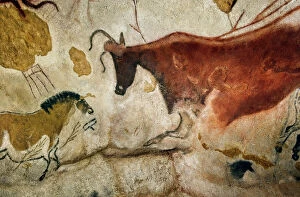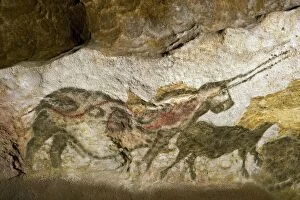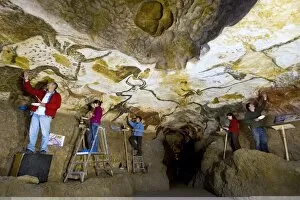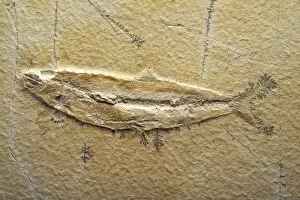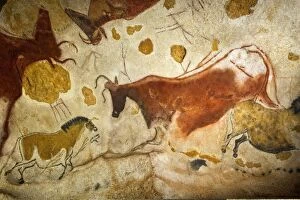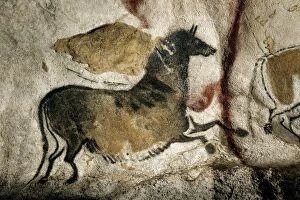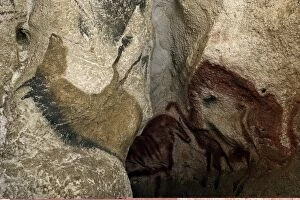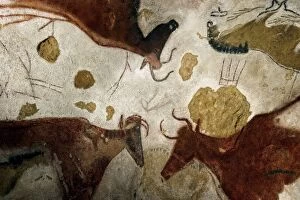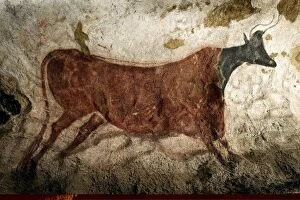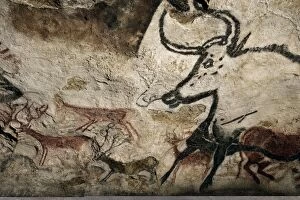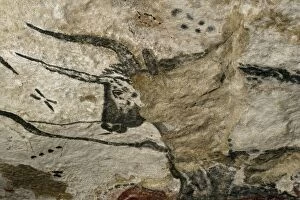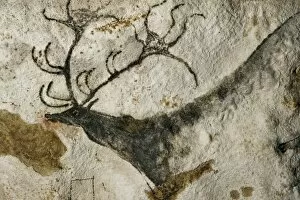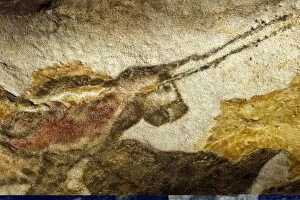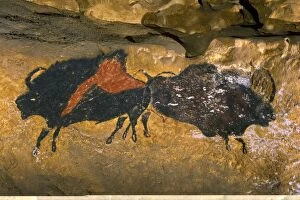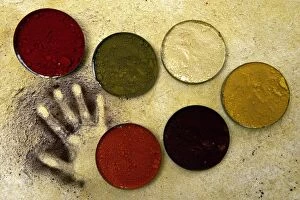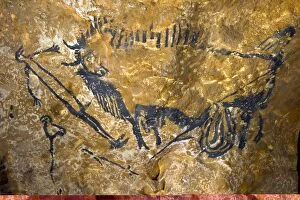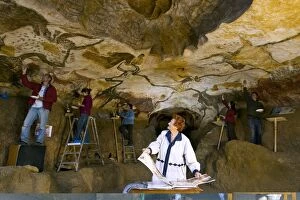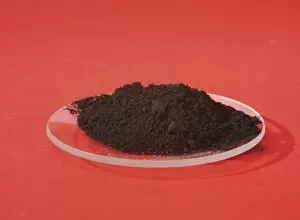Manganese Dioxide Collection
"Manganese Dioxide: Unveiling the Secrets of Ancient Art" Deep within the enchanting Lascaux II cave, a remarkable journey begins
For sale as Licensed Images
Choose your image, Select your licence and Download the media
"Manganese Dioxide: Unveiling the Secrets of Ancient Art" Deep within the enchanting Lascaux II cave, a remarkable journey begins. As we step into this replica of prehistoric artistry, our eyes are immediately drawn to the captivating paintings adorning its walls. Amongst these masterpieces lies an intriguing element that played a vital role in their creation – manganese dioxide. The first hint of its presence can be found in the vivid depiction of animals on display. The use as a pigment allowed our ancestors to bring life and vibrancy to their artwork. From the majestic Thrissops formosus swimming gracefully through ancient waters to intricately detailed animal figures, each stroke tells a story etched in time. As we explore further, we stumble upon dedicated restoration efforts aimed at preserving these invaluable treasures for future generations. Meticulous work is being done by experts who understand the significance of every brushstroke and hue. With utmost care and precision, they delicately apply manganese dioxide-based pigments to revive these fading wonders. Manganese dioxide's unique properties have made it an indispensable tool throughout history. Its ability to withstand erosion has ensured that these cave paintings endure thousands of years later, allowing us a glimpse into humanity's past like never before. Beyond Lascaux II's walls lie countless replicas showcasing mankind's artistic prowess from eons ago. Each painting meticulously recreated with manganese dioxide-infused pigments brings us closer to understanding our ancestors' creative spirit. In this mesmerizing realm where past meets present, one cannot help but marvel at how something as simple as manganese dioxide has shaped human expression across millennia. It serves as a reminder that even amidst technological advancements today, there is still much wisdom and inspiration waiting to be discovered from those who came before us. So let us immerse ourselves in this world where art transcends time and space - where strokes painted with manganese dioxide breathe life into long-lost stories.

